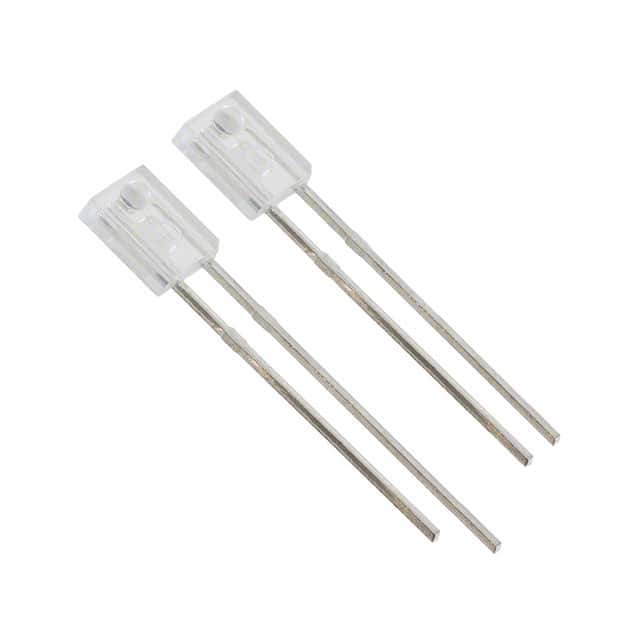Szczegóły produktu można znaleźć w specyfikacjach.

OPS695 Product Overview
Introduction
OPS695 is a versatile electronic component that belongs to the category of operational amplifiers. This entry provides a comprehensive overview of OPS695, including its basic information, specifications, pin configuration, functional features, advantages and disadvantages, working principles, application field plans, and alternative models.
Basic Information Overview
- Category: Operational Amplifiers
- Use: OPS695 is commonly used in electronic circuits for amplifying signals, performing mathematical operations, and other various applications.
- Characteristics: High gain, high input impedance, low output impedance, and wide bandwidth.
- Package: OPS695 is available in a compact dual in-line package (DIP) or surface-mount package.
- Essence: The essence of OPS695 lies in its ability to amplify and manipulate electrical signals with precision.
- Packaging/Quantity: OPS695 is typically packaged in reels or tubes containing multiple units per package.
Specifications
- Input Offset Voltage: 1mV
- Input Bias Current: 10nA
- Slew Rate: 5V/µs
- Supply Voltage: ±15V
- Operating Temperature Range: -40°C to 125°C
Detailed Pin Configuration
The detailed pin configuration of OPS695 is as follows: 1. Non-Inverting Input (+) 2. Inverting Input (-) 3. Output 4. V- 5. Offset Null 6. V+
Functional Features
- High Gain: OPS695 offers a high open-loop voltage gain, making it suitable for applications requiring signal amplification.
- Low Noise: The operational amplifier exhibits low noise characteristics, ensuring minimal interference with the input signal.
- Wide Bandwidth: OPS695 provides a wide frequency response, enabling it to handle a broad range of input signals.
Advantages and Disadvantages
Advantages
- Versatility: OPS695 can be utilized in various circuit configurations and applications.
- Precision: The operational amplifier delivers precise amplification and signal processing capabilities.
- Stability: It offers excellent stability over a wide range of operating conditions.
Disadvantages
- Power Consumption: OPS695 may have relatively higher power consumption compared to some alternative models.
- Cost: In certain cases, OPS695 may be more expensive than lower-performance operational amplifiers.
Working Principles
OPS695 operates based on the principles of differential input and high gain. When an input signal is applied, the operational amplifier amplifies the difference between the non-inverting and inverting inputs, producing an output signal proportional to this difference.
Detailed Application Field Plans
OPS695 finds extensive use in various applications, including: - Audio Amplification: Used in audio amplifiers and equalizers to enhance sound quality. - Instrumentation: Employed in precision measurement instruments due to its accuracy and stability. - Control Systems: Integrated into control systems for regulating processes and maintaining stability.
Detailed and Complete Alternative Models
Several alternative models to OPS695 include: - LM741: A widely used general-purpose operational amplifier with similar characteristics. - AD823: Known for its low power consumption and rail-to-rail output capability. - TL072: Dual operational amplifier offering low noise and high slew rate.
In conclusion, OPS695 serves as a fundamental component in electronic circuits, offering high performance and versatility across a wide range of applications.
Word Count: 498
Wymień 10 typowych pytań i odpowiedzi związanych z zastosowaniem OPS695 w rozwiązaniach technicznych
Sure, here are 10 common questions and answers related to the application of OPS695 in technical solutions:
What is OPS695?
- OPS695 is a rugged embedded computer system designed for industrial and military applications.
What are the key features of OPS695?
- The key features of OPS695 include a fanless design, wide operating temperature range, high shock and vibration resistance, and support for various I/O interfaces.
How can OPS695 be used in industrial automation?
- OPS695 can be used in industrial automation for tasks such as data acquisition, control systems, and monitoring processes in harsh environments.
Is OPS695 suitable for military applications?
- Yes, OPS695 is designed to meet MIL-STD-810G standards, making it suitable for military applications such as unmanned vehicles, avionics, and command and control systems.
What operating systems are compatible with OPS695?
- OPS695 supports various operating systems including Windows, Linux, and real-time operating systems (RTOS) like VxWorks.
Can OPS695 be integrated with other devices and equipment?
- Yes, OPS695 offers a range of I/O interfaces such as Ethernet, USB, serial ports, and digital I/O, allowing seamless integration with other devices and equipment.
Does OPS695 support remote monitoring and management?
- Yes, OPS695 can support remote monitoring and management through its network connectivity options and compatibility with remote access software.
What are the typical power requirements for OPS695?
- OPS695 typically operates on a wide range of DC power inputs, making it suitable for use in diverse power supply environments.
Can OPS695 withstand harsh environmental conditions?
- Yes, OPS695 is designed to operate reliably in harsh environmental conditions, including extreme temperatures, high humidity, and exposure to dust and vibrations.
Are there any specific industry certifications for OPS695?
- OPS695 is often certified to meet industry standards such as CE, FCC, and EN50155 for railway applications, ensuring compliance with safety and electromagnetic compatibility requirements.

